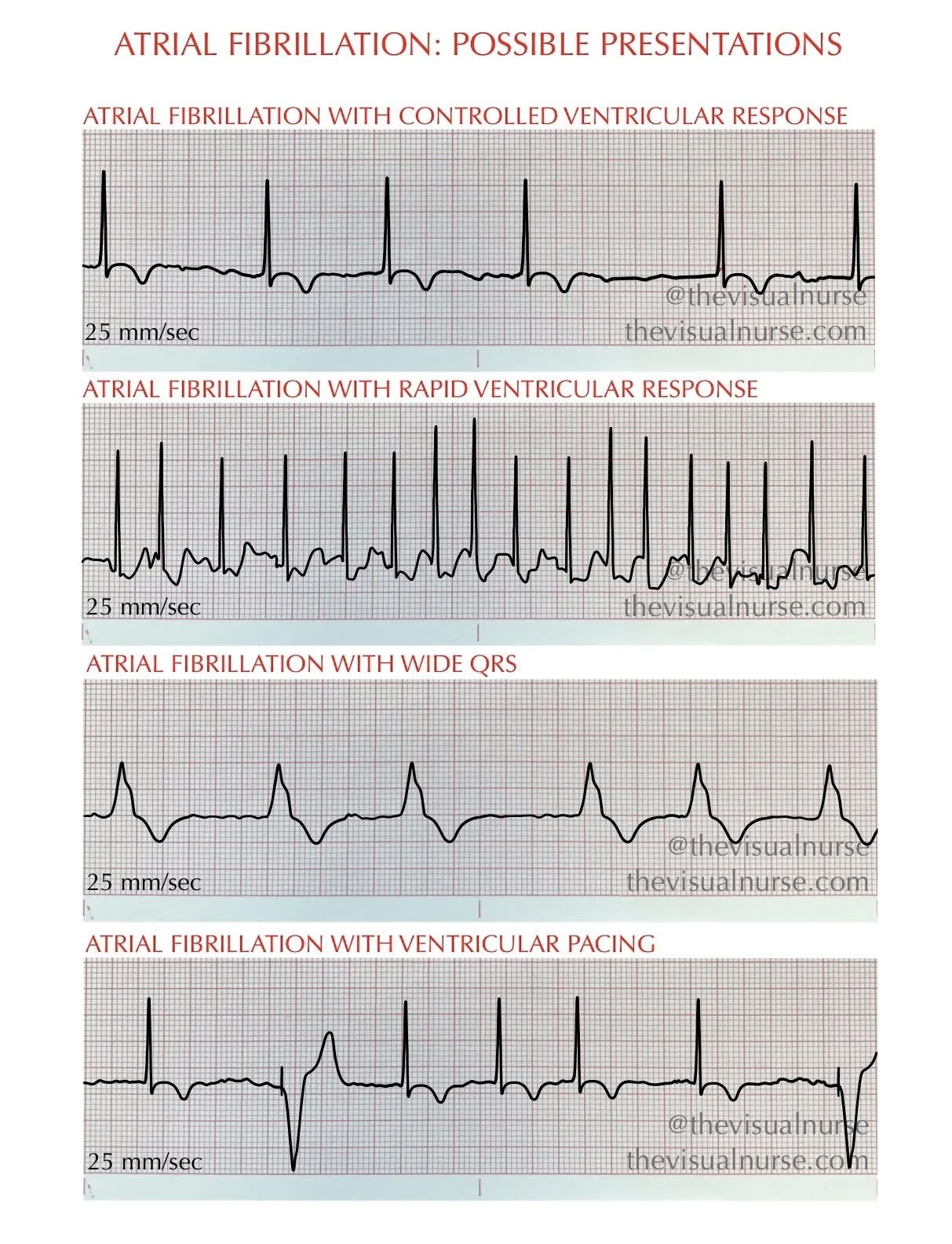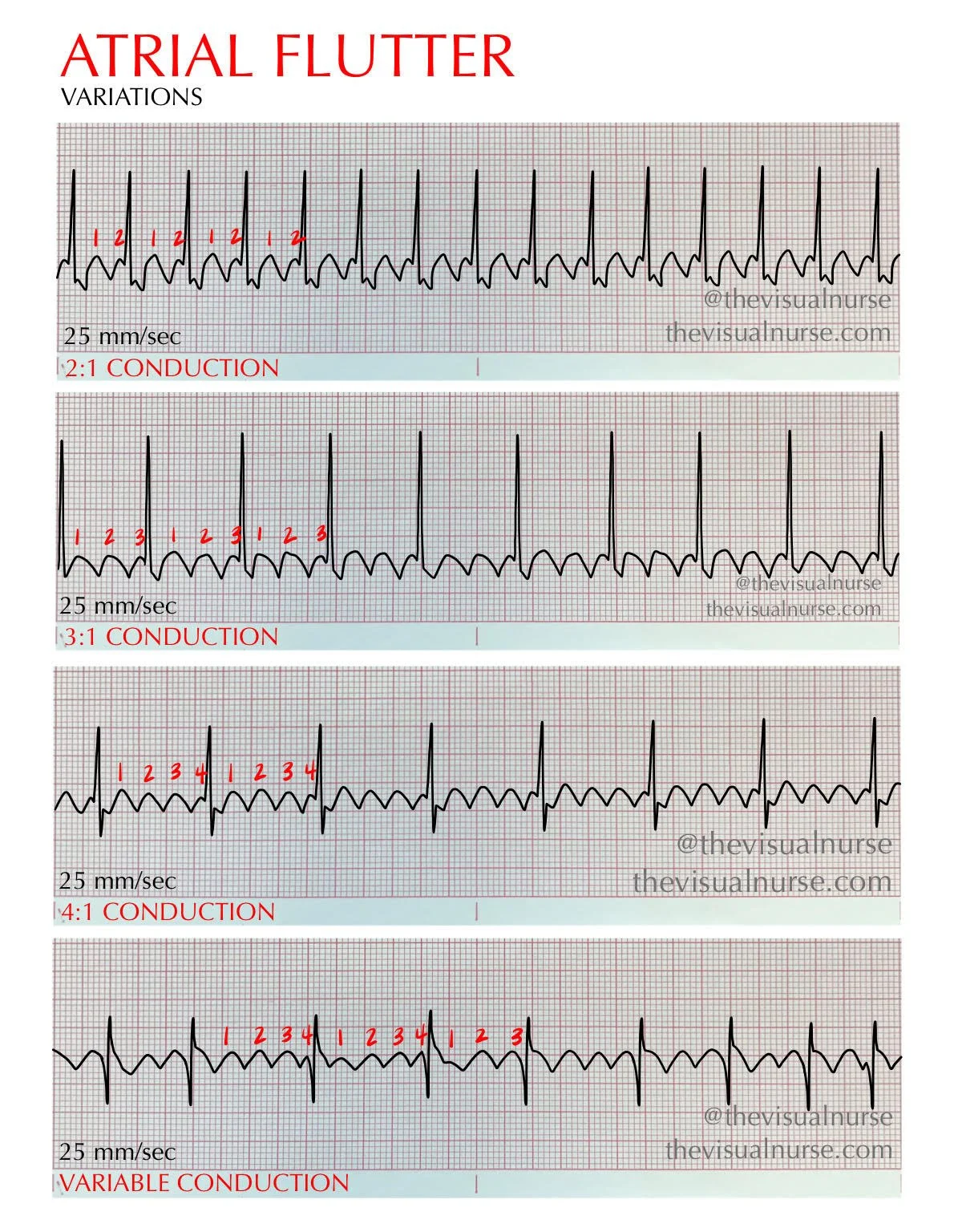Atrial fibrillation vs. atrial flutter on the ECG for nurses & nursing students
In honor of atrial fibrillation awareness month, here’s a quick graphical overview of atrial fibrillation versus atrial flutter ECG characteristics!
Atrial fibrillation:
Atrial waves often variable in size and appearance (may be coarse or fine)
Atrial rates ~300-600/minute
Atrial impulses do not march out
^Ventricular response is IRREGULARLY irregular = no way to predict where the next R wave will land
SUPRA-ventricular origin: narrow complex QRS
Check out the examples below!
Atrial flutter
Classic sawtooth appearance (typical flutters)
Atrial waves/Flutter waves typically similar in appearance
Atrial rate commonly ~300 BPM
Flutter waves march out
Ventricular response pattern may be regular or irregular
SUPRA-ventricular origin: narrow complex QRS
Check out the examples below!
Hope this helps!
*From a single lead basic rhythms and nursing perspective. Exceptions exist in the real world.
Follow @thevisualnurse on Instagram for daily rhythm quizzes!
Instagram: @thevisualnurse


